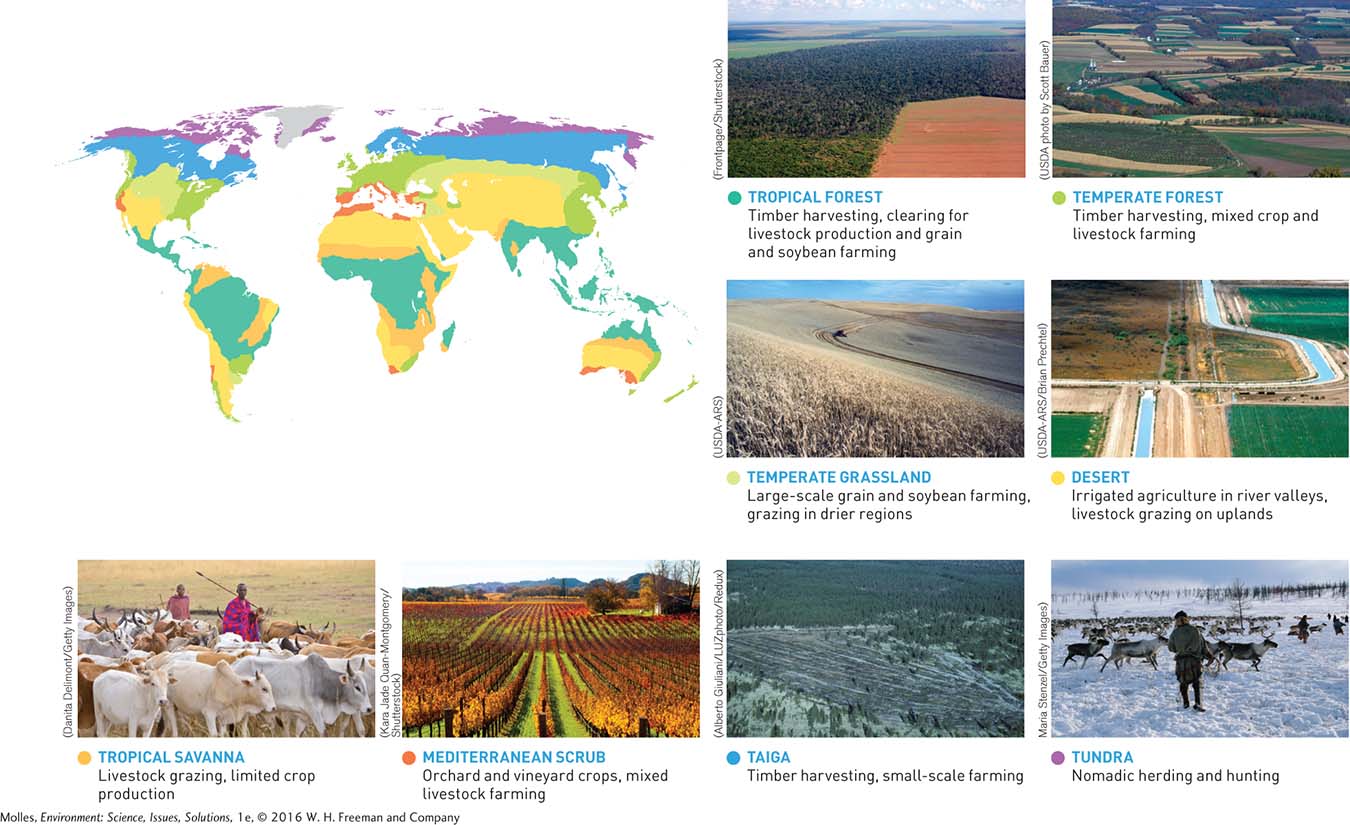7.2 Agriculture, forestry, and grazing systems are built on the natural biomes
terrestrial harvest systems
Ways of extracting production from ecosystems, ranging from hunting and gathering in unmanaged natural ecosystems to nomadic herding and small-
Humans establish their terrestrial harvest systems, such as forestry, ranching, and farming, within the boundaries of natural biomes (Figure 7.4). That means the same factors that influence primary production in nature—

Farming
The temperate forest biomes, with their moderate climates and fertile soils, can generally support intensive agriculture. This is particularly true for temperate deciduous forests, which have been cleared of oaks, maples, and other trees to make way for farms. For example, the highly productive rice farming of China and Japan is concentrated in the temperate forest biome. Some of the most fertile soils occur in temperate grasslands, which is why the prairie regions of North America and Eurasia have been centers of wheat and maize farming. Faming in prairie and Mediterranean regions often requires irrigation, which creates a challenge to sustainability (see Figure 6.13, page 167).
Ranching
ranching The practice of raising domesticated livestock for meat, leather, wool, and other products.

Why have the indigenous herding cultures of both tundra and deserts been largely nomadic?
Large grazing and browsing animals, such as elk, kangaroo, and musk ox, naturally exist on every continent, suggesting that ranching, the practice of raising domesticated livestock for meat, leather, wool, and other products is possible almost everywhere. Historically, migratory herding people inhabited the tundra, desert, and semi-
Forestry
forestry The management of forests and woodlands for the harvest of timber or fuelwood.
Tropical biomes generally sustain high levels of primary production (see Figure 7.1) and are home to valuable hardwoods such as mahogany and rosewood. However, because many tropical forests grow on old, highly oxidized soils from which abundant rains have washed most plant nutrients, reforestation can be a frustratingly slow process that makes sustainable harvesting more difficult (see Figure 7.6). In temperate coniferous forests, soils are generally less fertile than soils in deciduous forests because conifer needles are acidic. Taiga also has acidic soils and short growing seasons. Thus, these biomes are better suited to supporting forestry, the management of forests and woodlands for the harvest of timber or fuelwood, than agriculture.
Think About It
The United States is large and encompasses several biomes with different potentials for agriculture and forestry. What problems might smaller countries face in meeting their food and timber needs?
Are the biomes with the highest level of primary production always the best places for agriculture? Why or why not?
When humans replace native vegetation with agricultural crops or a second growth forest, how might primary production differ from the original plant community?